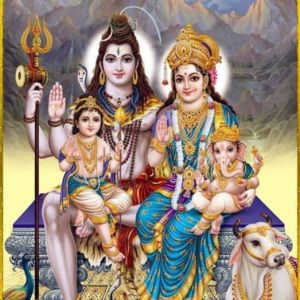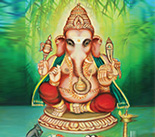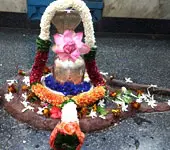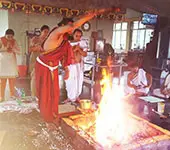Kalasarpa Dosha Relief Mantra
Comments
Lyrics
(Click here to read more)
सर्पराजाय विद्महे नागराजाय धीमहि तन्नोऽनन्तः प्रचोदयात् sarparaajaaya vidmahe naagaraajaaya dheemahi tanno'nantah' prachodayaat....
Lyrics
(Click here)
सर्पराजाय विद्महे नागराजाय धीमहि तन्नोऽनन्तः प्रचोदयात्
sarparaajaaya vidmahe naagaraajaaya dheemahi tanno'nantah' prachodayaat
Recommended for you
Mantra For Blessings Of Lord Shiva

तत्पुरुषाय विद्महे महादेवाय धीमहि तन्नो रुद्रः प्रचोदय....
Click here to know more..Understand the principle of Lord Ganesha through this beautiful stotra - Part 1
 Click here to know more..
Click here to know more..
Vatuka Bhairava Kavacham

kunkumenaasht'agandhena gorochanaishcha kesaraih'. dhaarayetpaat'haayedvaapi sampat'hedvaapi nityashah'. sampraapnoti phalam sarvam naatra kaaryaa vic....
Click here to know more..
Mantras
Mantras
Click on any topic to open
- 451 Dattatreya Mantra to Fulfill All your Desires
- 450 Balambika Mantra for Academic Triumph
- 449 Panchamukha Hanuman Mantra - Channel Inner Strength
- 448 Secure with Pratyangira Mantra for Protection
- 447 Krishna's Blessings: Path to Happiness
- 446 Narasimha Mantra: Peace & Reconciliation
- 445 Debt Relief Dattatreya Mantra
- 444 Purity of Mind and Spiritual Growth with Hanuman Mantra
- 443 Wealth Attraction: Prosperity Mantra
- 442 Manifest Blessings: Dattatreya Mantra
Please wait while the audio list loads..
30
Ganapathy
Shiva
Hanuman
Devi
Vishnu Sahasranama
Mahabharatam
Practical Wisdom
Yoga Vasishta
Vedas
Rituals
Rare Topics
Devi Mahatmyam
Glory of Venkatesha
Shani Mahatmya
Story of Sri Yantra
Rudram Explained
Atharva Sheersha
Sri Suktam
Kathopanishad
Ramayana
Mystique
Mantra Shastra
Bharat Matha
Bhagavatam
Astrology
Temples
Spiritual books
Purana Stories
Festivals
Sages and Saints
